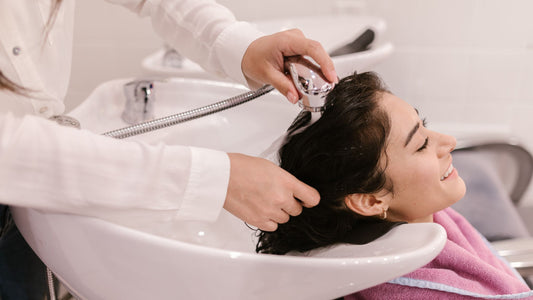Introduction
If your hair's been looking a bit sad and worse for wear—think split ends, brittleness, and lackluster strands—you're not alone. Damage can stem from various sources like heat styling, chemical processing, or even environmental stressors. But the good news? It's not irreversible. This guide will walk you through understanding hair damage, and most importantly, how to repair it with effective treatments and practical tips.
What Causes Hair Damage?
Hair damage occurs when the outer layer of your hair, the cuticle, becomes weakened or worn down, exposing the more fragile inner core. Here are some common culprits:
- Heat Styling: Tools like straighteners, curling irons, and blow dryers can scorch your hair, making it brittle.
- Chemical Treatments: Dyes, perms, and relaxers contain harsh chemicals that can strip away natural oils and weaken your hair's structure.
- Environmental Factors: Sun exposure, humidity, pollution, and even cold weather can dry out your hair and lead to damage.
-
Mechanical Stress: Simple actions like brushing too harshly or towel-drying aggressively can cause physical harm to your hair strands.

How to Identify Damaged Hair
Before we dive into the solutions, let's pinpoint the problem. Here's how you can tell if your hair is damaged:
- Texture Change: Your hair feels rough, dry, or brittle to the touch.
- Increased Breakage: More hair than usual is breaking off during styling or brushing.
- Split Ends: The ends of your hair are frayed or easily split.
- Dullness: Lack of shine and a dull appearance are tell-tale signs of damaged hair.
- Tangles: Damaged hair often gets tangled more easily due to roughened cuticles.
Professional Treatments to Consider
Sometimes, home care isn't enough, and professional intervention becomes necessary:
- Keratin Treatments: These can help to smooth and seal the hair cuticle, reducing frizz and adding shine.
- Nanoplastia Treatment: A revolutionary treatment that repairs the bonds within your hair structure, making it stronger and more resilient.
- Trimming: Regular trims can prevent split ends from worsening. Even a slight trim can make a difference.
DIY Remedies to Repair Damaged Hair
In addition to professional treatments, there are plenty of effective home remedies:
- Deep Conditioning Masks: Use ingredients like coconut oil, avocado, or honey to create nourishing masks that hydrate and strengthen your hair.
- Rinse with Cool Water: Hot water can strip your hair of essential oils. Rinse with cool water to help seal the cuticle and retain moisture.
- Avoid Heat Styling: Whenever possible, let your hair air dry and embrace its natural texture.
- Protective Hairstyles: Opt for loose, comfortable styles that don’t pull at your roots or stress your ends.
Maintaining Healthy Hair
Repairing damaged hair is just the start; maintaining it requires consistent care:
- Use the Right Products: Invest in shampoos, conditioners, and styling products that are suitable for your hair type.
- Regular Salon Visits: A good relationship with a professional stylist can help you keep your hair in top condition.
- Healthy Diet: Just like your skin, your hair benefits from a nutritious diet rich in vitamins and minerals.
Conclusion
Reviving damaged hair doesn't happen overnight, but with the right approach, you can gradually restore its health and vitality. Remember, prevention is just as important as treatment, so take care of your locks with gentle handling and proper nutrition.
Hair care is a journey, but with persistence and the right strategies, you can achieve the luscious, healthy hair you deserve!







